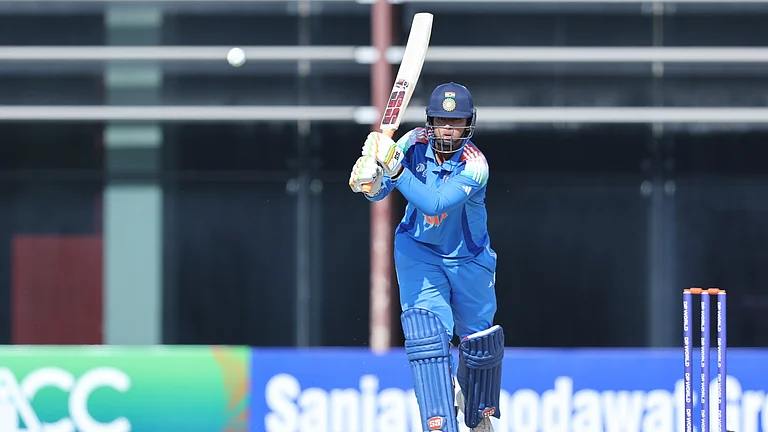The students at the Jawaharlal Nehru University (JNU) in Delhi are up in arms against the ban on protests and ‘anti-national’ activities on the campus. From the Left-ruled JNU Students Union (JNUSU) to the right-wing Akhil Bharatiya Vidyarthi Parishad (ABVP), the university administration has attracted bipartisan ire.
In a recent directive, the JNU administration banned putting up posters and staging sit-in protests within 100 metres of academic buildings on the campus. A fine of Rs 20,000 or expulsion was also announced for ‘anti-national’ activities — a loosely defined term that has returned to the campus after a break of few years.
While JNUSU President Aishe Ghosh termed the ban an attack on the “vibrant democratic culture” of the university, ABVP National General Secretary Yagywalkya Shukla called it “Stalinist, dictatorial, and anti-student”.
While JNU has been the most recognisable name nationally when it comes to student movements in recent years, it is not the only one. The neighbouring campuses of the University of Delhi and Jamia Millia Islamia (JMI) have had their fair share of student movements — as have several other campuses, such as the Aligarh Muslim University (AMU) in Uttar Pradesh. A common thread connecting these campuses is the rising sentiment that student movements are under an all-out assault. The believers say the response of the state, which has ranged from stringent criminal cases to brute police force, is part of the organised effort to curb student movements, which otherwise have a long history in India.
For decades, student movements have reflected contemporary sociopolitical currents. Understandably, students have been at the forefront of major protests lately beyond strictly student issues, whether it’s the Pinjra Tod movement against hostel restrictions to the outpour during the protests against the Citizenship Amendment Act (CAA) and the proposed National Register of Citizens (NRC) in 2019-20.
“The most consistent criticism and opposition of the Narendra Modi government has come from the students of the country. It began with the protests at FTII, Pune with the appointment of Gajendra Chauhan as its head and continued to the CAA-NRC and beyond. Now, the students are protesting against the onslaught on education by the National Education Policy,” says Prasenjeet Kumar, General Secretary of All India Students Association (AISA), the student wing of the Communist Party of India (Marxist–Leninist) Liberation.
While students protest against curbs in Delhi, another episode involving students is playing out in Kerala. At a time when Governor Arif Mohammed Khan and Pinarayi Vijayan’s state government are at constant loggerheads, Khan claimed that his car was “attacked” by the members of the Students Federation of India (SFI), the student wing of the state’s ruling party Communist Party of India-Marxist (CPI-M). The episode serves as yet another reminder that student politics does not remain isolated from the broader political trends.
From Protests Against Education Policies To CAA/NRC
One of the earliest student movements after the Bharatiya Janata Party (BJP) stormed to power in 2014 was the monthslong agitation after the Narendra Modi government appointed yesteryear actor and BJP leader Gajendra Chauhan as the head of the Film and Television Institute of India (FTII), Pune. It was seen as a political appointment.
The ‘Occupy UGC’ protests followed when students camped at the University Grants Commission (UGC) office in New Delhi to protest against the scrapping of all non-National Education Test (NET) scholarships in the country. Both of these incidents happened in 2015.
The year 2016 was a turning point when Jawaharlal Nehru University (JNU) and student politics and activism were thrust into mainstream consciousness. Two protest movements happened that year. One, the movement after the suicide of Dalit scholar Rohith Vemula at Hyderabad University. Two, the JNU sedition row where some students were accused of raising ‘anti-national’ slogans at an event protesting the hanging of Afzal Guru, who was convicted and sentenced to death for his role in the 2001 Parliament Attack.
The then-JNU Students Union (JNUSU) President Kanhaiya Kumar and student activist Umar Khalid became household names. The two were branded ‘anti-nationals’ and so was JNU as a university.
AISA General Secretary Prasenjeet Kumar says while the student movements were targeted earlier as well, the delegitimisation since 2014 is something new altogether.
“Since 2014, there has been a demonisation of student politics and movements. When the students were protesting the death of Rohith Vemula, people asked why older students were there in universities. Earlier during the Anna Hazare movement, people used to appreciate the participation of students, but such was the demonisation that the appreciation was replaced by questions about the age or conduct of women students or the very idea of student politics in later years. The aim was to create a bad image of universities and student movements,” says Kumar.
While protests continued at Benaras Hindu University (BHU) and Aligarh Muslim University (AMU) and elsewhere over localised issues, the major thrust came in 2019 when Jamia Millia Islamia (JMI) in Delhi became the centre for protests against the Modi government’s Citizenship Amendment Act (CAA) and the proposed National Register of Citizens (NRC).
Kumar calls the past 10 years a “decade of historic student movements” but cautions that the space for such movements is now shrinking.
Campuses Under Attacks, Critical Spirit At Target
While the police action at the Jamia Millia Islamia (JMI) and the attack on the Jawaharlal Nehru University (JNU) by outsiders at the height of anti-CAA/NRC agitation in December 2019 and January 2020 respectively are the most prominent memories of campuses coming under attacks, these were not the first instances of a campus in the capital came under attack. That was the University of Delhi’s Ramjas College in 2017.
In February 2017, when the Department of English was organising a seminar in which Umar Khalid was invited, students from the Akhil Bharatiya Vidyarthi Parishad (ABVP), the student wing of the Rashtriya Swayamsevak Sangh (RSS), held protests at the venue in the college. While the invitation to Khalid —who had attracted the ire of critics over his views on Kashmir— was revoked and he never came, that did not assuage the protesters who continued to remain at the venue.
An alumna of Ramjas, who was among the organisers of the event, recalls that the sloganeering outside the venue at the college continued throughout and they effectively blockaded the venue, disallowing anyone there to get out or anyone from outside to come in. After the seminar attendees were stranded at the venue on the first floor, stone-pelting began.
“We were in the first floor venue. By then, the electricity supply had been cut. Stones were pelted at us that broke through the glass windows. Students were injured and were bleeding from glass cuts. It was then that we decided to come down in a group. We came out and sang ‘We Shall Overcome’ and sat in front of the mob that was still raising slogans. Stones were also pelted at us. We were in panic and were afraid for our lives. All of us were easily identifiable since we were wearing departmental shirts,” recalls the alumna, choosing to be anonymous.
The former student recalls that they somehow reached their accommodations, but messages started circulating later that evening that the addresses of women students had been leaked and threats of violence and rape had been made against them.
“Several outstation students left Delhi in the next one or two days. Our seniors and faculty members helped us with safe accommodations,” says the Ramjas alumna.
After the first round of violence, a number of professors and students wished to take out a march to the Maurice Nagar Police Station but the march —which was toned down in size at the behest of the police— barely made it halfway and came under attack again for the second time.
The Ramjas alumna recalls that for the remainder of her course, while things did not overtly change, there was a noticeable difference. The ex-student says that the teachers were much more careful about events and guests and permissions for departmental events began to be declined.
“While things did not change upfront and the college remained an open space that hosted critical voices, the message had been delivered and everyone was much more careful in what to say and whom to invite. It was more about feeling the change than seeing it around you,” says the alumna, who graduated in 2019.
A Ramjas alumna, who went on to a master's at Ambedkar University (AU), says that moving to AU felt strange as anything critical of the establishment was spoken of indirectly and there was no direct criticism or even critical conversations on the establishment.
“For me, Ramjas was the last space where open critical conversations were allowed. That started to change after the 2017 incidents but did not stop. When I reached Ambedkar University after the 2019 elections, the situation was quite different. The critical spirit was absent,” says this alumna.
Laws Being Misused, Activists Punished With Process: Student Leader
The anti-CAA/NRC agitation was followed by the 2020 Delhi Riots in which several student leaders were booked. While Umar Khalid remains in jail for conspiring to trigger communal violence, Pinjra Tod activists Devangana Kalita and Natasha Narwal along with Jamia student Asif Iqbal Tanha were also slapped with the stringent Unlawful Activities (Prevention) Act (UAPA).
AISA General Secretary Prasenjeet Kumar highlights that none of the student leaders booked so far have been convicted but they continue to suffer.
“Even those who are not in jails continue to suffer. One of our comrades, Chanda, studies at BHU but she has to come to Delhi every month because of the case against her. Similarly, Chandan has to come to Delhi every month regarding his case. In all these years, the authorities have not been able to prove anything. They have just given economic and mental harassment. They have turned the legal process into punishment,” says Kumar.
Since the students have been at the forefront of the biggest movements against the government, whether it is the farmers’ movement or the anti-CAA/NRC movement, the government is going after them and their institutions, says Kumar.
Kumar says that minority institutions like the Jamia Millia Islamia (JMI) and Aligarh Muslim University (AMU) have faced particular brunt.
“The government also discontinued the Maulana Azad National Fellowship (MANF), which was given to minority students pursuing M.Phil and Ph.D. Campuses like Jamia and Allahabad University have become prison-like where students are slapped with show-cause notices and fines for organising events that have been regular over the years. The situation is that students avoid raising apolitical issues like access to drinking water and longer library hours,” says Kumar.
As for the road ahead, Kumar says the student organisations are setting the stage for a movement against the National Education Policy (NEP).


























